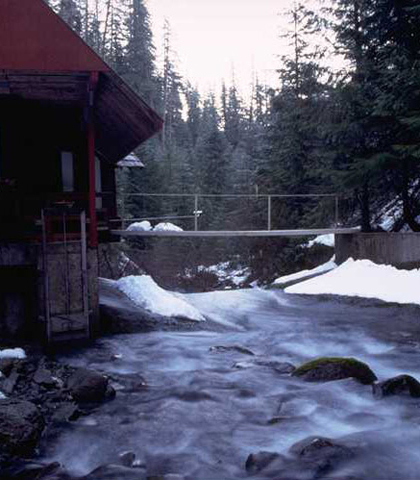Long-term stream nitrogen data shows nutrient’s role is complicated

Pristine forest streams aren’t just advertising fodder for bottled water companies and state tourism boards. They also play a crucial role in helping researchers understand our nation’s waterways.
A recent study of decades of water quality data in streams largely undisturbed by humans shows varying set of trends in potential pollutants. It also shows the value of long-term stream chemistry monitoring networks.
Understanding protected streams is vital for assessing water quality issues throughout the world since their untouched nature sets a precedent for what constitutes normal water quality standards, according to Alba Argerich, a postdoctoral research associate from Oregon State University and lead author of the study.
Argerich and her team of researchers analyzed longstanding water quality records—much of which date back to the early 1960s—of streams in six U.S. states and Puerto Rico to track how nitrogen concentrations affect reference streams.
Concerns over nitrogen’s impacts have been growing due to increases in nitrogen pollution throughout the country. Nitrogen has the potential to alter water’s chemical composition and agitate stream wildlife, which can lead to wide-ranging ecological and economic impacts.
“Excessive nutrients create an excess of algae. When the algae dies, all the oxygen is used to decompose the algae. So, it may cause a lack of oxygen in the stream, which prevents life,” Argerich said. “So, all the fish that live there might die, and then all the people that live from these fish cannot make their living. So, there are economic impacts, too.”
The main sources of nitrogen are agricultural runoff and atmospheric emissions. Excessive fertilizer use can lead to nutrient runoff into the water supply. Nitrogen from emissions from fossil fuels and industrial sources is absorbed into the atmosphere and transferred to waterways.
After analyzing a total of 559 years of stream nitrate and 523 years of stream ammonium data—the components of reactive nitrogen—researchers found that even the near-pristine waters of protected streams are vulnerable to change.
“Even though all the sites might be distant from cities, they still receive some of its influence through basic atmospheric waste,” Argerich said.
The water quality data showed that concentrations of stream nitrate have increased in the Mountain West and the South. Conversely, data shows that stream nitrate has declined in the Pacific Northwest, in the Northeast and in Puerto Rico.
The data also showed that nitrogen concentrations in two streams within the same site were not always in conjunction with each other, which suggests that stream nitrogen may be impacted by numerous variables.
In short, the data showed that there is no quick and easy way to make broad assessments of nitrogen’s impact in any region.
“What we can say from this study is that analyzing nitrogen levels is not truly simple,” Argerich said. “It’s a complicated question and it depends on the basin, the site and the history of the site. So, it’s difficult to make generalizations.”
After analyzing data collected over the course of 50 years, it is clear that there are still a myriad of questions to be answered to understand how to protect our environment in the coming century.
“The biggest conclusion is that we need to keep collecting these data sets because they are really important in helping us understand what is going on, and now it’s especially relevant,” Argerich said. “We are still learning a lot of things.”
The research is published in Environmental Research Letters.
Image: Mack Creek gaging station in Oregon (Credit: Oregon State University, Al Levno)





0 comments